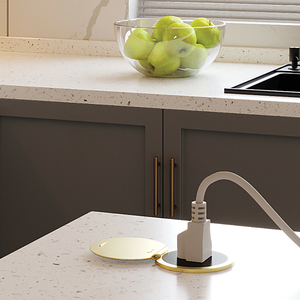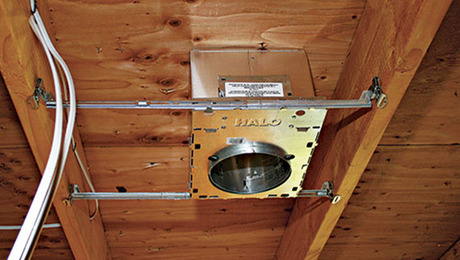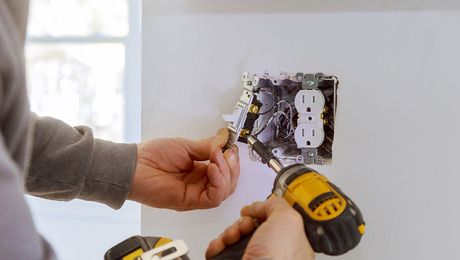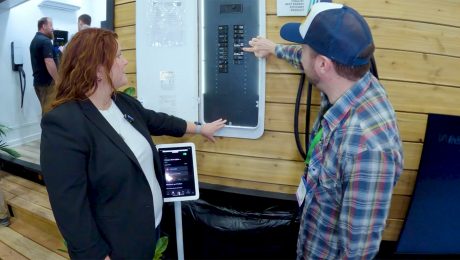Changing a 220v receptacle to 110v
Work safely as you install a new outlet and a new breaker in the electrical panel
Q: I need to change a 220v receptacle to a 110v. Is there an easy way to do this?
Ron, via e-mail, None
A: Robert Marino, an electrician from Trumbull, Connecticut, replies: The short answer is that it depends. Some necessary specifics were left out of your question. I’ll try to address them in discussing the changeover. But first, let’s discuss electrical tools and safety
Electricians use a wide variety of task-specific tools. Often, the difference between professional and amateur electrical work is the result of the do-it-yourselfer not having the appropriate tools. If you are going to tackle even what you may think are basic electrical projects, first put together a professional electrician’s tool kit. And remember, you can’t be safe enough when working around electricity, make sure that tool kit includes a voltage/continuity tester and a non-contact voltage tester and learn how to use them.
Now, I’ll assume that the 220v circuit in question is a dedicated circuit, which means that it feeds only the 220v receptacle in question and that the cable starts at the electrical panel or subpanel and ends at the 220v receptacle. The changeover will also be slightly different based on whether the 220v receptacle is being fed by a two-wire cable (black and white wires) or a three-wire cable (black, red and white wires).
The existing cable should be 12-ga. or 10-ga. copper cable. If so, then purchase a 20-amp receptacle and a 20-amp single-pole breaker. Before you start, turn off the main breaker for the panel (if the panel has one). Make sure that the 220v breaker at the electrical panel or subpanel is in the off position and that the wires have been disconnected from the breaker. (Note: Working around an electrical panel can be particularly dangerous. If you don’t feel comfortable working around live wires, call in a licensed electrician.) Next, test the 220v receptacle to make sure it’s dead.
Start the changeover at the receptacle end. If the 220v receptacle had been fed by a two-wire cable (a black wire, a white wire, and most likely a green or bare ground wire), just connect the white wire (the neutral or grounded conductor) to the silver screw and the black wire (hot or ungrounded conductor) to the brass screw. The ground wire is attached to the box if it’s metal and then to the green screw on the receptacle. I always wrap all my receptacles with electrical tape before reinstalling them.When you’ve finished wiring the new receptacle, mount it back in the box.
If the 220v receptacle was fed by a three-wire cable, just cap off the extra red wire with a yellow wire nut and electrical tape. Tuck the wire neatly into the box, and follow the instructions above.
Next, move on to the panel or subpanel. The wires should already have been removed from the old 220v breaker. First, you should connect the white wire to the neutral bar if it isn’t already connected. Remove the old 220v two-pole breaker, and then install the new single-pole breaker with the breaker placed in the off position.
If you are dealing with two wires, simply attach the black (hot) wire to the new breaker. If you’re dealing with three wires, attach the hot wire to the breaker, and again cap off the red wire with a yellow wire nut and electrical tape. Reinstall the panel cover or trim plate, and insert a special filler plate to cover the remaining open space left from the old 220v breaker.
Turn on the main breaker, then the new breaker, and insert an outlet tester into the new outlet. If everything was hooked up properly, the tester should bring you some good news.


























View Comments
I once spit a 220 volt 3 wire window AC plug into two separate 120 volt outlets, for use on my power guzzling aquarium. It provided the high amps required to run the many pumps, lights and heaters. I never swapped out the breaker from the double to singles and it worked just fine. But now I can't remember how I did it.
Kent
Picture perfect explanation Robert. My receptacle has three wires: black red and white. However, at the junction box, the circuit breaker has two thick black braided aluminum cables. Where/how did these two black wires change into three colored wires. Can I just use either one of the black cables for the new 20 amp circuit breaker and then just figure out if it is the red or black wire at the receptacle?